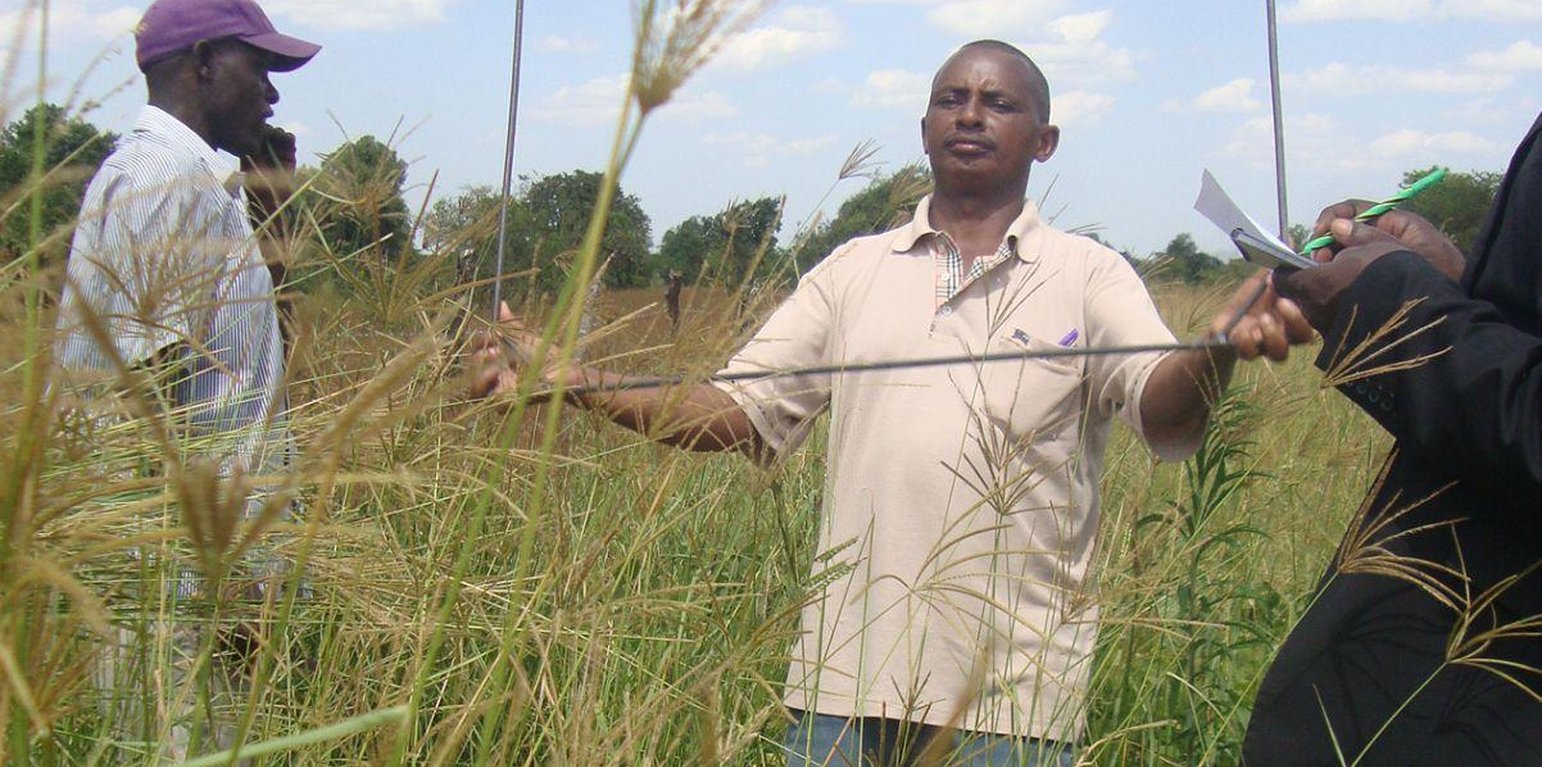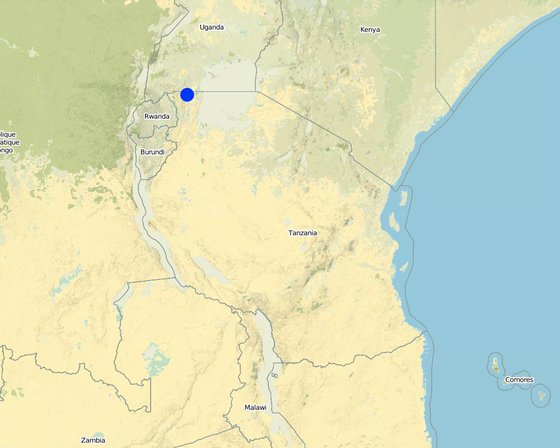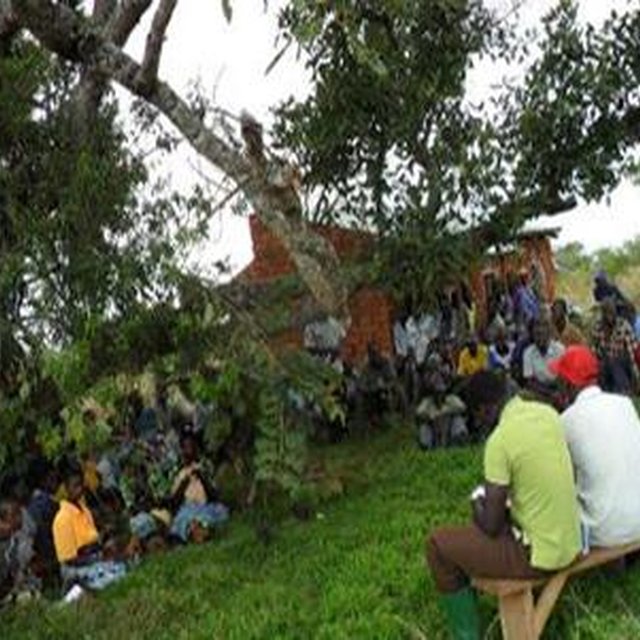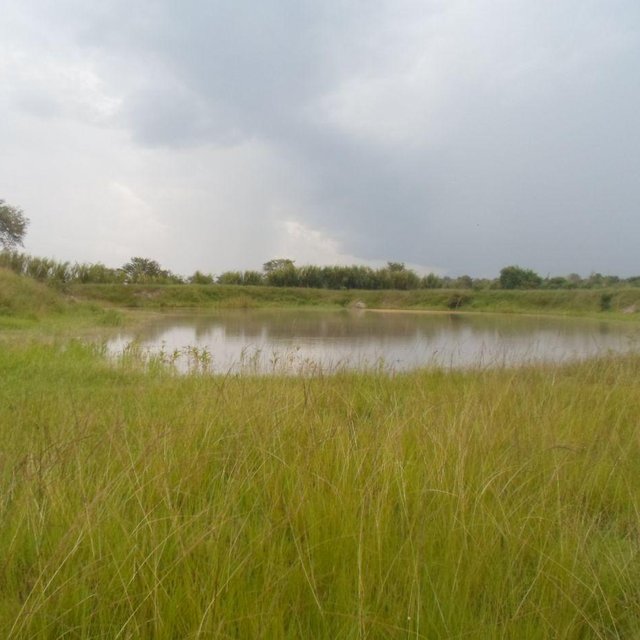



Multiple rangeland and pasture improvement techniques that combines water harvesting, rangeland reseeding and pasture establishment, livestock breeding management techniques to restore degraded rangeland in savannah with high livestock and optimize livestock production and productivity sustainably. These includes; 1. Chaco dam excavation for rain runoff harvesting mainly during the rainy season (February to April and August to December) mostly;(i).To ensure year round availability of water largely for watering livestock and partly for domestic and agriculture use especially during the main dry season when local sources (Ponds, springs or stream) are dry,(ii).To reduce soil erosion by water (lily or gully erosion, (iii).To reduce river bank erosion and silitation due direct watering of livestock in to Kagera river, (iii). To reduce the distance animal has to walk for watering and (iv) to reduce water use conflicts between herders and other land users. 2. Establishment of pasture demonstration plots where farmers are exposed to a basket choice (Low cost technique Vs high cost technique) of pasture and rangeland improvement technique either through ;( a). Tilling the land and broadcasting drought tolerant indigenous degenerated palatable pasture species of high nutritive value and, mainly (i).Grass; Cenchrus cliaris, Chloris gayana and (ii).Legumes; Centrocema puberse, Lablab purpureus, Mucuna Pluriens and Puperaria Phaseilides ) to a manured degraded rangeland; (b).i. Encouraging re-growth of proper pasture species in a degraded area to take place through clearing bushes, shrubs or trees ( leaving edible shrubs and few selected shed trees especially acacia spp which allow pasture re-growth underneath and provide shed against intense sun radiations to livestock especially during the main dry season- July to September); ii. Closing the degraded area by fencing using live indigenous trees or using wooden pole with or without barbed wire for 2 -3 years, removal of anthills and discouraging regeneration of unproductive invasive species and hence returning the rangeland to productivity;3. Genetical improvement of local cattle (Ankole or Zebu) through crossbreeding with introduced improved bull especially boran, Frisian or Mpwapwa bulls to allow farmers to keep few improved offspring of high production and productivity ;4.Farmer training on rangeland improvement and grazing management including hay making and how to estimate carrying capacity 5. Establishment of livestock markets directly on the rangeland to encourage off take and hence control stocking rate and increase carrying capacity.
Purpose:To contribute to the increase of herders’ standard of living through increased livestock production and productivity while conserving the environment
Estblishment activities:1. Community mobilization and formation of project management commetee with 10 members; 2. Identification of project sites; 3. Land clearing; 4. Establishment of pasture demonstration plots; 5. Excavation of chacodam and construction of watering troughs; 6. Fencing of individual owned land using wooden pole with barbed wire or live fencing using euphobia spp; 7. Farmer training on pasture establishment and controll of stocking rate; 8. Procurement of bulls (Boran or Mpwapwa) for cross breeding with ankole females; 9. Construction of livestock market
Maintanence Activities: 1. Repair of livestock infrastructures (Chacodam, watering troughs, livestock fence, livestock markets).
The technology is implemented in extensive grazing land under semi arid condition receiving 600 -1000mm of rains per year. A combination of rangeland improvement measures (Excavation of chacodam for rainwater runoff harvesting, pasture improvement and establishment techniques, fencing and breeding management through cross breeding local cow (Ankole/zebu) with Boran/Mpwapwa bulls) complement each other to restore degraded rangeland and increase livestock production and productivity in savannah. The slope is gentle to moderate; soil depth is shallow and soil texture clay. Heavy tools (Bulldozer) to Simple hand tools are traditional used. Bulldozers are used during chacodam excavation and bush clearing by well-off herder will small hand tools such as hand hoe, bush knife and spade are used smallholder herders for excavation of water pond and construction of indigenous livestock watering points. Land ownership is Communal/village, individual titled and individual not titled. Water use rights is open access (unorganized), communal (organized). Application of this technology determined by high establishment costs.

Location: Missenyi, Tanzania, Kagera, Tanzania, United Republic of
No. of Technology sites analysed:
Spread of the Technology: evenly spread over an area (approx. 1-10 km2)
In a permanently protected area?:
Date of implementation: less than 10 years ago (recently)
Type of introduction











| Specify input | Unit | Quantity | Costs per Unit (Tanzanian Shilling) | Total costs per input (Tanzanian Shilling) | % of costs borne by land users |
| Labour | |||||
| labour | ha | 1.0 | 810.93 | 810.93 | |
| Equipment | |||||
| tools | ha | 1.0 | 34.0 | 34.0 | |
| Plant material | |||||
| seeds | ha | 1.0 | 1204.0 | 1204.0 | |
| Fertilizers and biocides | |||||
| compost/manure | ha | 1.0 | 274.42 | 274.42 | 20.0 |
| Construction material | |||||
| Chacodam Excavation | ha | 1.0 | 16007.0 | 16007.0 | 20.0 |
| Const livestock makert | ha | 1.0 | 12577.0 | 12577.0 | 20.0 |
| Other | |||||
| Procument of 6 bulls | ha | 1.0 | 548.84 | 548.84 | 20.0 |
| Vaccination | ha | 1.0 | 54.88 | 54.88 | |
| Fencing | ha | 1.0 | 1957.7 | 1957.7 | |
| Total costs for establishment of the Technology | 33'468.77 | ||||
| Total costs for establishment of the Technology in USD | 15.31 | ||||
| Specify input | Unit | Quantity | Costs per Unit (Tanzanian Shilling) | Total costs per input (Tanzanian Shilling) | % of costs borne by land users |
| Labour | |||||
| labour | ha | 1.0 | 205.34 | 205.34 | 20.0 |
| Equipment | |||||
| tools | ha | 1.0 | 34.0 | 34.0 | |
| Total costs for maintenance of the Technology | 239.34 | ||||
| Total costs for maintenance of the Technology in USD | 0.11 | ||||